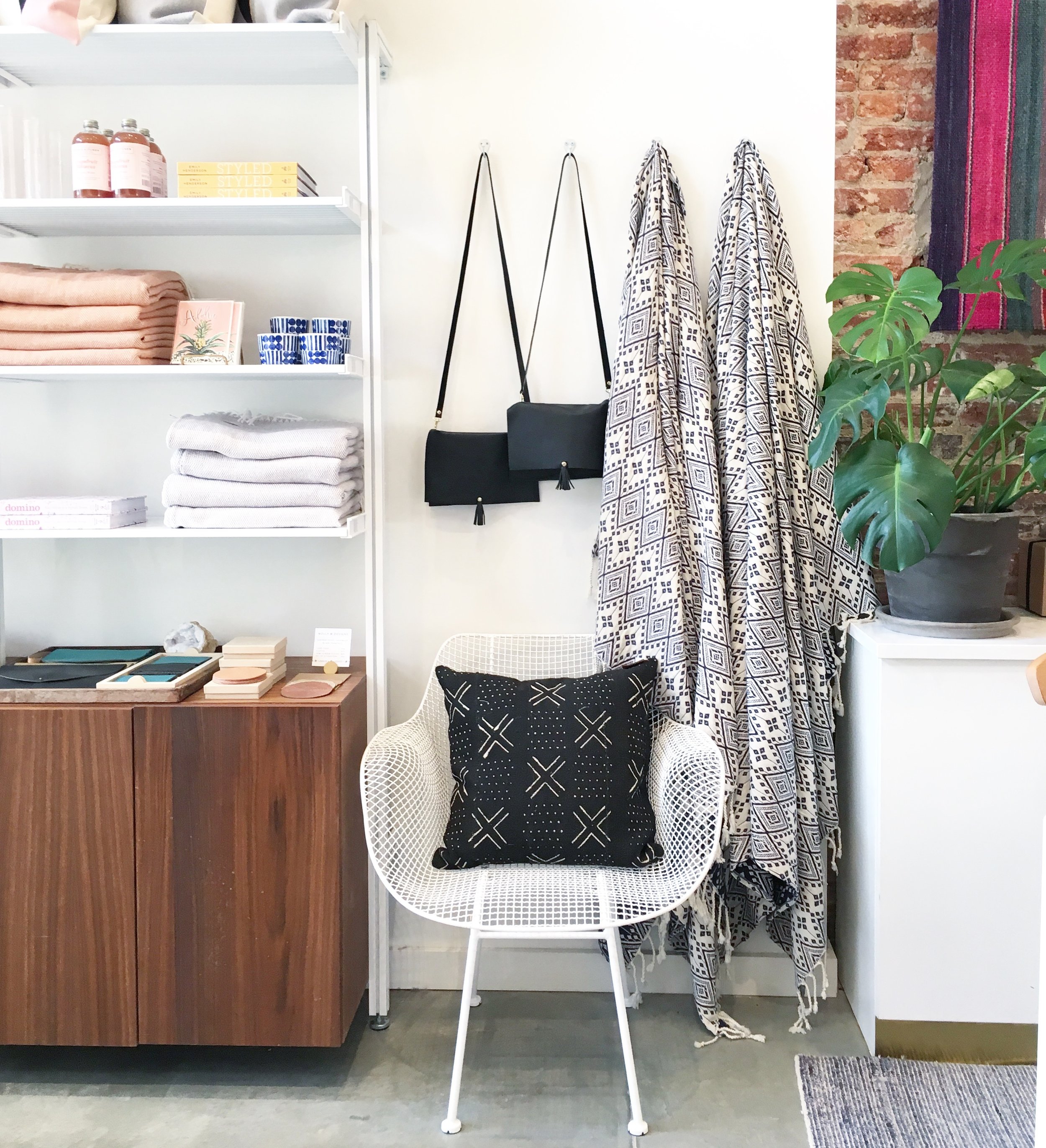Amanda McClements is the product of two “free-spirited, food-loving parents from North Carolina,” she says, and that upbringing “inspired my passion for hospitality and eclectic style.” After writing about travel and food for ten years, she started “dreaming up a place that brought together beautiful goods—a place that would inspire people to entertain and create beautiful spaces.”
In 2012, a space opened up in Washington, D.C.’s Union Market, an eclectic food market in an area of the city whose rise and development has been greatly chronicled. McClements jumped on the chance, and within two years of opening up Salt & Sundry, she was opening a second location near D.C.’s Logan Circle. Now, in addition to that, she owns two outposts of Little Leaf, a plant and paper shop.
McClements thinks of her style as “Southern bohemian,” a laidback and relaxed aesthetic that’s a bit unexpected, she says. Her influences come from music, art, and the beauty of diverse cultures, a mindset that could be the definition of the New Southern. Southern style is no longer reserved for the South, and in the case of McClements, her global perspective “comes through in the goods we stock, like vintage textiles from South America and mud cloth pillows from West Africa.”
Here, get to know the creative force behind D.C.’s beloved brand, and a born-and-raised Southerner whose entrepreneurial mind is helping shape the next generation of creatives.
Alyssa Rosenheck: What innovative trends are you seeing with Southern style across the country?
Amanda McClements: Southern hospitality is legendary, but I’ve loved seeing a move toward more comfortable and casual entertaining. Formality has given way to a more relaxed approach that’s a lot easier to pull off. So while you might still pull out your grandma’s china for a dinner party, you’re mixing it up with modern, laid-back touches to dial the vibe down a bit.
AR: How have you mastered the growth of your brand?
AM: Mastered is a strong word: it’s more like manage. I have an incredible team (about 40 strong now!) and I find few things more rewarding than watching them become empowered and learn to lead. I know I can’t do it alone, so supporting and nurturing the team around me has been key to managing our growth
Salt & Sundry
Salt & Sundry
Salt & Sundry
AR: What advice do you have for female entrepreneurs?
AM: Remember that your experience won't necessarily look like anyone else's. When I got started, I looked to others to tell me how to do things “right”…this is what running a business is like, this is how you manage people, this is how you manage finances. But I've learned that while other people's lessons can certainly inform you, your path will be your own, and you actually have a choice in how you do it.
AR: The place you go to get inspired?
AM: A new city. I love that moment when wheels touch down on the runway of a place I’ve never been. I get a surge of excitement and anticipation
Little Leaf
AR: Who are some of your favorite artists/makers?
AM: My father is a carpenter in Durham, North Carolina, and we sell his beautiful farm tables made from reclaimed and locally milled wood. Like a good carpenter’s daughter, I’m smitten with the stories of the old wood and I love imagining the people who walked on the boards, what they wore and cooked, and how they lived. A few other Southern makers I’m a huge fan of are Honeycomb Studio in Atlanta, Settle’s sweet ceramics and Son of a Sailor’s modern jewelry, both in Austin, and Big Spoon’s addictive nut butters out of Durham.
AR: What’s your advice for mixing old with new?
AM: Just do it! I love a layered look where older pieces get a fresh feel from their contemporary neighbors. The uniting thread just needs to be that you love them.
AR: What’s you go-to housewarming gift?
AM: Salt has been a symbolic gift throughout history, bringing luck, health, and flavor. I love to pair one of our artisan sea salts—like Bull’s Bay from Charleston or JQ Dickinson from West Virginia—with a handmade salt cellar.
Little Leaf
AR: Tell us something we probably don’t know.
AM: One of the houses I lived in growing up had an outhouse.
AR: What’s the greatest color combination that ever existed?
AM: Black + white. I know they’re not exactly colors, but still. It doesn’t get more crisp and modern than black and white.
AR: What does “The New Southern” mean to you?
AM: There are a lot of misconceptions about the South, and to me, The New Southern means shining a light on a culture that’s diverse, modern, and savvy.
Amanda McClements, Salt & Sundry Photo: Taylor Kampa Olson
Salt & Sundry















